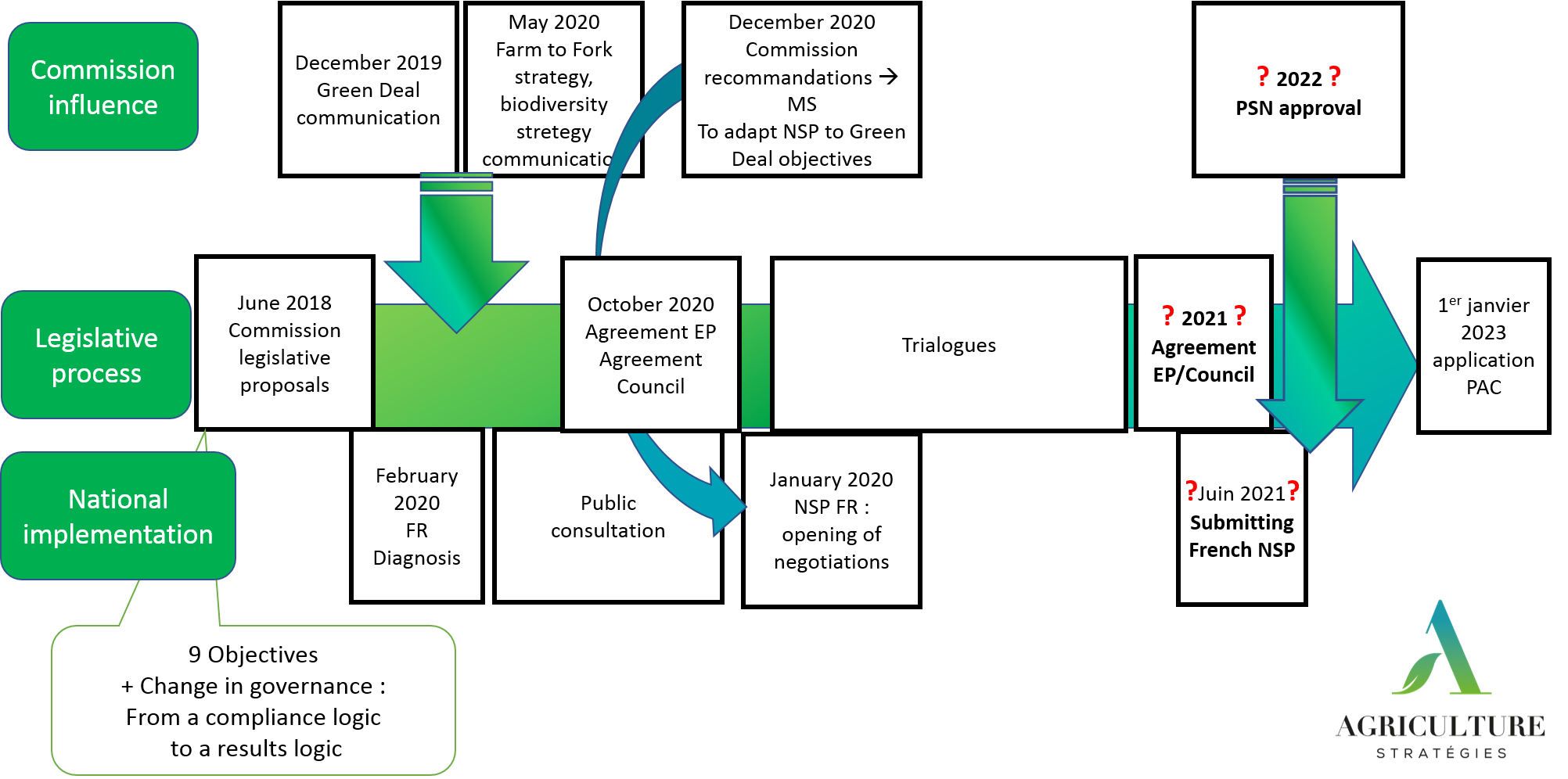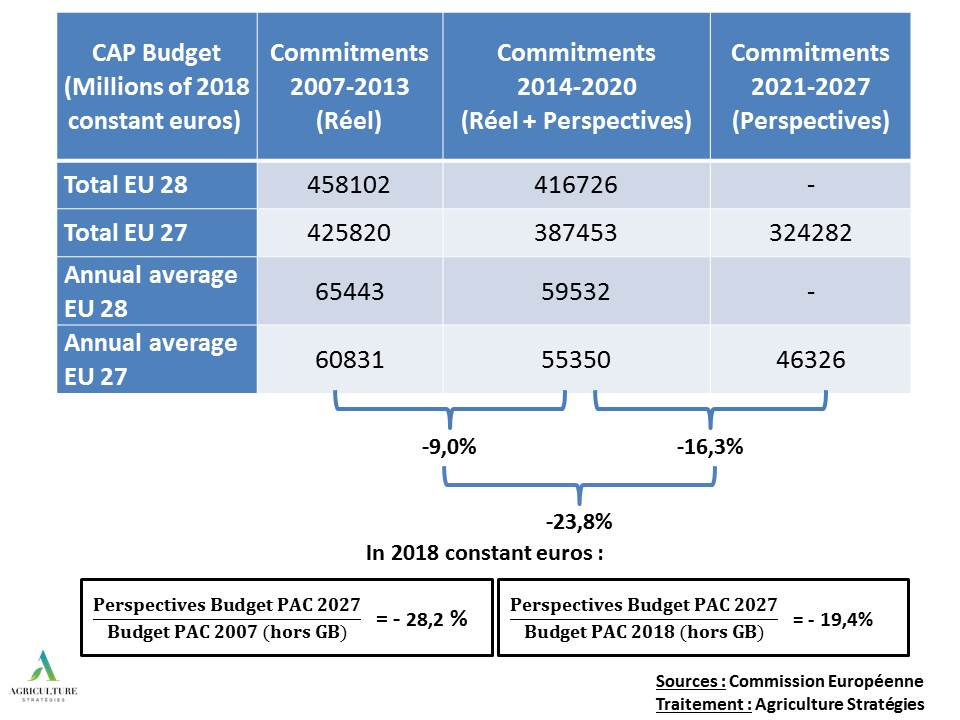
This article was also published on the ARC2020 website
The concept of Payment for Environmental Services (PES) is very present in the debates on the next post-2020 CAP but tends to overshadow the agri-environment-climate measures (AECM), which have been a type of PES integrated into the CAP for 20 years. For some of their promoters, the PES are supposed to be superior to the AECM because being a result-based approach and being a better incentive for farmers: a study commissioned by the French Ministry of Agriculture shows that this is far from proven. On the contrary, by its budgetary repercussions on the AECM and the futile attempt to restore the legitimacy of decoupled payments by greening it, the promotion of the PES concept was rather unfavorable to the environmental aspect of the CAP during the previous reform. And with the proposal for a 25% decrease in the CAP second-pillar budget, a source of funding for the AECMs, the main ingredients seem to have come together for it to be back in the next CAP.
It is well known that hell is paved with good intentions and the debates around the next reform of the Common Agricultural Policy (CAP) are no exception to the rule. Putting forward the concept of Payment for Environmental Services (PES) could once again be counter-productive to a better consideration of the environment in the CAP, because paradoxically, the promotion of this concept is in opposition with the contractual approach – agri-environment-climatic measures – which are a recognized instrument for supporting farmers in the environmental transition1. Why ? This is what we explain in this article.
1) There are already PES in the CAP: agri-environment-climate measures (AECM)!
As the debate on the next CAP progresses, we often hear from the positions of experts or decision makers calling for the CAP to pay farmers for the environmental services they provide. This is even sometimes presented as a novelty or even a major break with the current policy direction. Agri-environmental measures have been a full-fledged component of the CAP since the beginning of the 2000s. In fact, they were renamed agri-environmental- climate measures (AECM) during the 2013 reform. And if we use one of the most widely accepted definitions of the PES concept, namely that adapted from Tacconi (2012)2, “a transparent system for an additional supply of ecosystem services through conditional payments to voluntary suppliers”, then the AECMs are clearly PES. A recent report commissioned by the Ministry of Agriculture from the Oréade-Brèche research office also confirms this and places the AECM among the 4 main types of PES3.
Promoting the concept of PES in the CAP is therefore not new. But this is the main battleground for those who want to reduce the CAP to an environmental policy applied to agriculture. Their main argument, “public money for public goods”, even claims that the protection of the environment and the concept of internalization of environmental externalities – whether they are positive (landscape amenities for example) or negative (diffuse pollution) – constitute the only justifications for public intervention in agriculture. It is unfortunately cutting corners to think in such a way, and ignoring the other market failures that cause agricultural economic crises, which equally justify corrective public intervention. It is quite remarkable that some environmental NGOs are taking their distances from this reduction of the CAP to an environmental policy applied to agriculture as they increasingly call for improving social and economic conditions for farmers as a gateway to trigger the transition of farming systems. It is hard to take the risks of a change in practices or production system when you are in a state of economic survival!
2) We associate PSE with a result-based approach, a non-operational one
In most PES promoters, you will also find the idea that, unlike AECM s, which are essentially based on an obligation of means, PES would make it possible to integrate a results-based approach into the CAP. As the Oréade-Brèche study also shows, things are far from being that simple. The links between changes in practice and the services provided by ecosystems are very complex. This implies a significant risk of failure regardless of the efforts made by the farmers who cannot control all the factors involved. In addition, the results in terms of improving the natural environment are usually measured on a scale greater than that of the farm: the quality of the water is assessed at the scale of a catchment and not the parcel. Because of this, we cannot usually individualize the results and the transaction and self-control costs are potentially huge if it consists of coordinating all the farmers from a same territory.
The storage of carbon in the soil is one of the few environmental services whose results can be individualized: all you have to do is analyze soil. However, while carbon storage is one of the few production externalities that can be internalized via the carbon quota market, what is the point of integrating this dimension into the CAP and involving a public payment?
3) As it stands the CAP does not allow to go beyond the rule of costs incurred and income foregone.
Today, the evolution of the CAP is overdetermined by the rules of the WTO agricultural agreement of 1994. Consideration of the environment is no exception. In order to meet the criteria of the WTO green box, the amount of aid that a farmer can receive in the name of environmental protection cannot exceed the costs incurred and the income foregone that he will have to bear by engaging in a virtuous practice. The rationale behind this rule is that you cannot use the environmental argument to indirectly support farmers’ incomes.
Therefore, when some put forward the PES as the means to go further than the AECM which is considered as not being a good enough incentive for farmers, they forget that this rule of costs incurred and income foregone is not specific to AECM but is valid for the entire CAP. That said, a result of the same study Oréade-Brèche draws attention: the amounts associated with the AECM would be, in France in particular, already well below their maximum level and all the more so that an increase of 20 % to take into account the costs of administrative procedures for farmers is already allowed.
Also, the low incentive rate of the AECMs and especially the small amounts allocated to this type of measure (about 4% of the CAP budget in France) are mainly attributable to political arbitrations and not to technical constraints linked to AECM-like instruments.
4) The pro-PES speech is intended to condone the greening of decoupled payment to the detriment of the AECM
Introduced in the budget debate prior to the definition of the 2014-2020 budget, the “greening” of decoupled payment consisted in conditioning 30% of the 1st pillar envelope on the respect of environmental criteria going beyond the regulation: maintaining the grasslands , diversity of rotations and areas of ecological interest (hedges, isolated trees, grass strips along streams, etc.). Thus, if he complies with these three criteria, each farmer receives a green payment representing 30% of the decoupled payments he previously received. At first, the environmentalists could only applaud with both hands.
In reality, they were more than disappointed because the ambition of the thresholds associated with the three criteria were low, as no Member State sought to impose strong constraints on its producers already affected by the income crisis, and the derogations from these principles have multiplied. In addition, establishing single thresholds on such generic criteria across a range of territories as diverse as the European countrysides was a challenge: for example, what is the meaning of providing support for the maintenance of permanent grasslands to those who do not have any? A recent report of the European Court of Auditors4 with the explicit title “Greening: a more complex income support scheme, not yet environmentally effective” confirms the ineffectiveness of the greening of decoupled payment: to give two objectives (support for income and environmental protection) to the same instrument (decoupled payments) is like running two hares at a time, we are not achieving much! The greening of decoupled payments thus takes the form of an attempt at “greenwashing”5!
Despite the failure of the greening of decoupled payments, the AECM and the defense of their budget do not seem to have found more support in the debate on the next CAP. On the contrary, in the Commission’s proposals for the post-2020 CAP, greening has been replaced by “eco-scheme” aids to finance farmers who choose to engage in practices beneficial for the climate and the environment … which remain to be defined. The regulatory proposal only indicates that it will be aids per hectare that must comply with the rule of costs incurred and income foregone. While no mention is actually made of PES in the draft regulation, the same logic that prevailed with the 2013 greening is in place, that is, a shift in the protection objective of the environment in the first pillar of the CAP to the detriment of the second pillar and the AECM. The budget proposals confirm this: while a 16% drop in the overall agricultural budget is proposed, it is a 25% fall in the second pillar budget that is coming.
In conclusion, we will repeat the words of Albert Camus: “badly naming things is to add to the misfortune of the world!”. As attractive to the neophyte as it may be, the semantics of PES harms more than it serves the strengthening of the environmental component of the CAP. This has already been the case in the previous reform, it may be more so in the next. However, the AECMs have shown that contracts where farmers commit for five years to specifications to change their entire production system towards sustainability are an effective tool when the financial means are up to the mark. They risk once again being hurt by a futile attempt to green the first pillar of the CAP to give legitimacy to decoupled payments which, regardless of prices and production practices, will never be able to have any. But even if it succumbs to the call of novelty, it may be worth renaming the AECMs as Environmental and Energetic Transition Contracts (EETC) to make them more visible in the debates, this is in any case what we do in our proposals “Towards an in-depth reform of the CAP in a multilateral framework to be renewed”6.
Frédéric Courleux, Director of Studies of Agriculture Strategies
1 See the ex-post evaluation of the Programme de Développement Rural Hexagonal 2007-2013 https://www.reseaurural.fr/sites/default/files/documents/fichiers/2017-10/2017_rrf_rapport_synthese_evaluation_ex_post_PDRH_2007_2013_fr.pdf
2 See Tacconi, L., 2012. Redefining Payments for Environmental Services, Ecological Economics, 73 (1), pp. 29-36.
3 http://agriculture.gouv.fr/paiements-pour-services-environnementaux-et-methodes-devaluation-economique
4 https://www.eca.europa.eu/fr/Pages/DocItem.aspx?did=44179
5 Read in particular FNE « CAP 2015-2020 : from greening to greenwashing »: https://www.fne.asso.fr/publications/politique-agricole-commune-pac-fne-livre-son-analyse
6 Read https://www.agriculture-strategies.eu/wp-content/uploads/2018/06/Note_Reference_Strategique_Consensus_Reforme_PAC_250518-1.pdf











